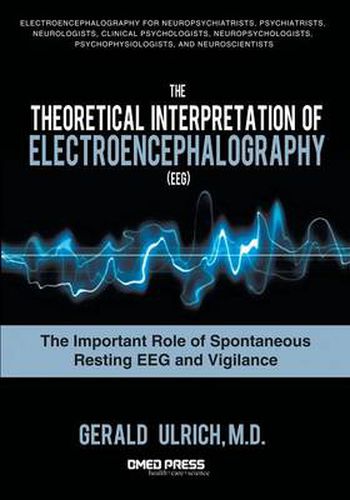Readings Newsletter
Become a Readings Member to make your shopping experience even easier.
Sign in or sign up for free!
You’re not far away from qualifying for FREE standard shipping within Australia
You’ve qualified for FREE standard shipping within Australia
The cart is loading…






This title is printed to order. This book may have been self-published. If so, we cannot guarantee the quality of the content. In the main most books will have gone through the editing process however some may not. We therefore suggest that you be aware of this before ordering this book. If in doubt check either the author or publisher’s details as we are unable to accept any returns unless they are faulty. Please contact us if you have any questions.
Gerald Ulrich, MD provides an authoritative, advanced guide to theory-based EEG interpretation that is grounded in the Berlin Psychiatry School Model of EEG-Vigilance. The Berlin model is not well known in the United States. Instead, EEG is dominated by data-driven Q-EEG where one looks at mathematical correlations without a coherent theory to guide interpretation. This is the first known published book on this topic. Dr. Ulrich’s aim is to help the reader increase self-confidence in EEG assessment in clinical practice or research and to facilitate more reliable and valid EEG interpretations. He provides a skilled synthesis of decades of EEG research alongside his expert insights from his 40 years of clinical experience and research with EEG. The reader will learn how to visually discern spatio-temporal patterns with 132 high-quality examples of EEG images - the majority within the course of spontaneous resting EEGs. Additionally, the EEG-pathology of psychiatric syndromes and the impact of common psychotropic medications on the EEG are described in detail. Another important contribution is the identification of a common type of biological artifact which has gone unnoticed in research that is likely responsible for the unsatisfactory test-retest reliability and questionable validity of the EEG; the author proposes a simple solution to this vexing artifact problem. In the second part of the book, the reader is introduced to novel QEEG procedures, especially related to EEG dynamics, which can be regarded as meaningful within the theory of EEG-vigilance.
$9.00 standard shipping within Australia
FREE standard shipping within Australia for orders over $100.00
Express & International shipping calculated at checkout
This title is printed to order. This book may have been self-published. If so, we cannot guarantee the quality of the content. In the main most books will have gone through the editing process however some may not. We therefore suggest that you be aware of this before ordering this book. If in doubt check either the author or publisher’s details as we are unable to accept any returns unless they are faulty. Please contact us if you have any questions.
Gerald Ulrich, MD provides an authoritative, advanced guide to theory-based EEG interpretation that is grounded in the Berlin Psychiatry School Model of EEG-Vigilance. The Berlin model is not well known in the United States. Instead, EEG is dominated by data-driven Q-EEG where one looks at mathematical correlations without a coherent theory to guide interpretation. This is the first known published book on this topic. Dr. Ulrich’s aim is to help the reader increase self-confidence in EEG assessment in clinical practice or research and to facilitate more reliable and valid EEG interpretations. He provides a skilled synthesis of decades of EEG research alongside his expert insights from his 40 years of clinical experience and research with EEG. The reader will learn how to visually discern spatio-temporal patterns with 132 high-quality examples of EEG images - the majority within the course of spontaneous resting EEGs. Additionally, the EEG-pathology of psychiatric syndromes and the impact of common psychotropic medications on the EEG are described in detail. Another important contribution is the identification of a common type of biological artifact which has gone unnoticed in research that is likely responsible for the unsatisfactory test-retest reliability and questionable validity of the EEG; the author proposes a simple solution to this vexing artifact problem. In the second part of the book, the reader is introduced to novel QEEG procedures, especially related to EEG dynamics, which can be regarded as meaningful within the theory of EEG-vigilance.